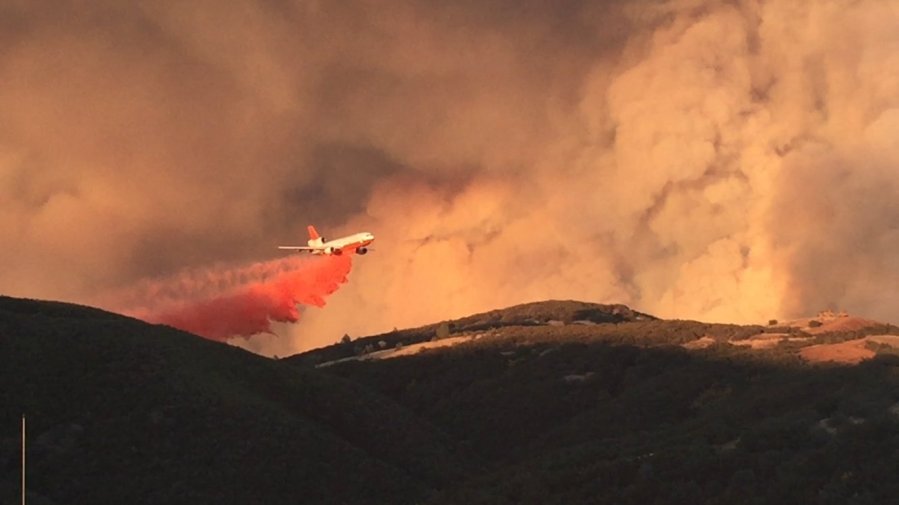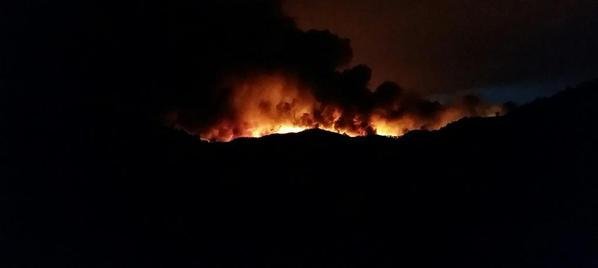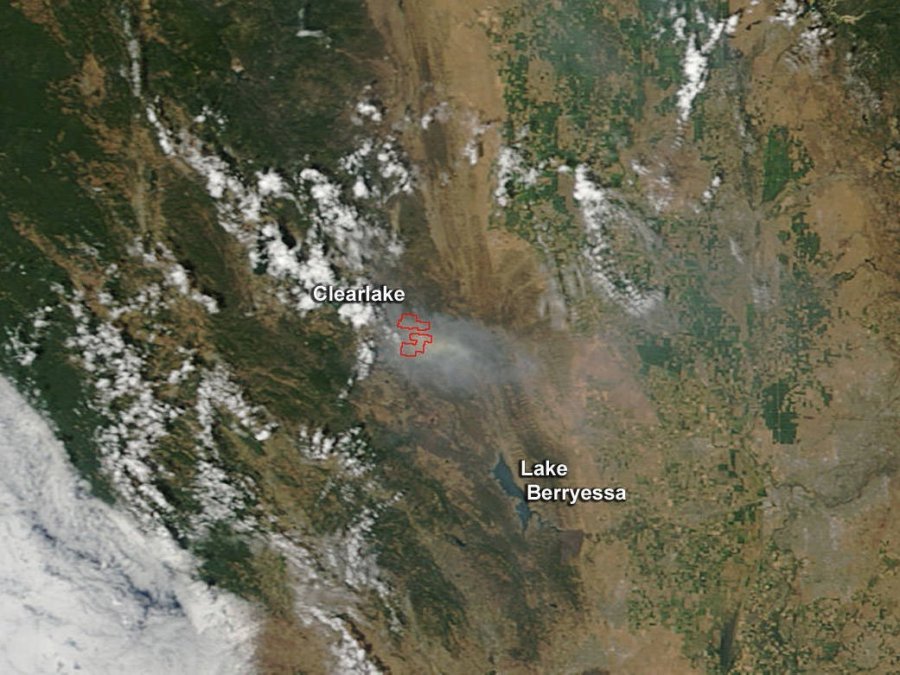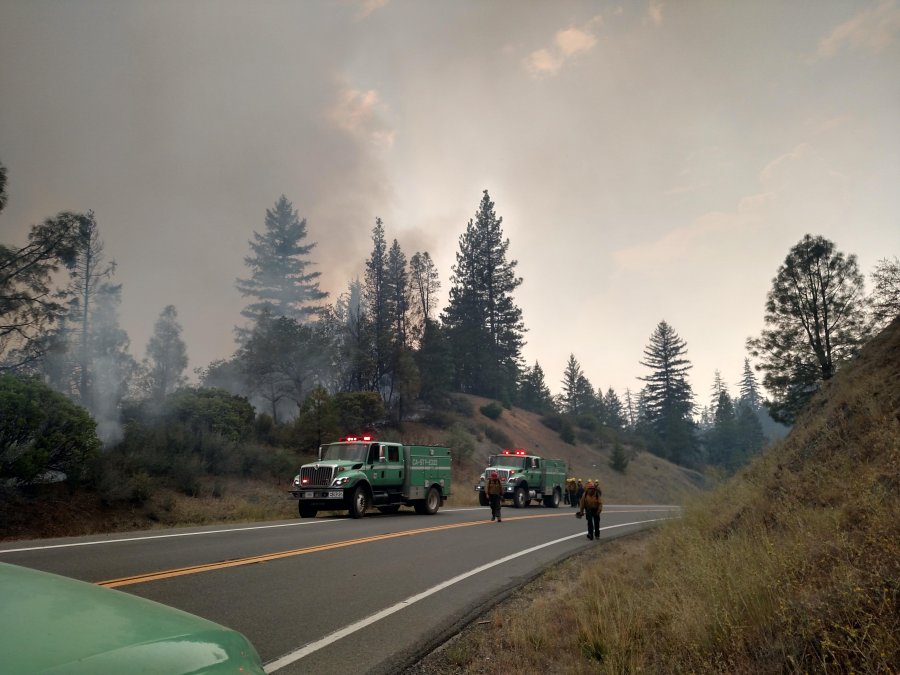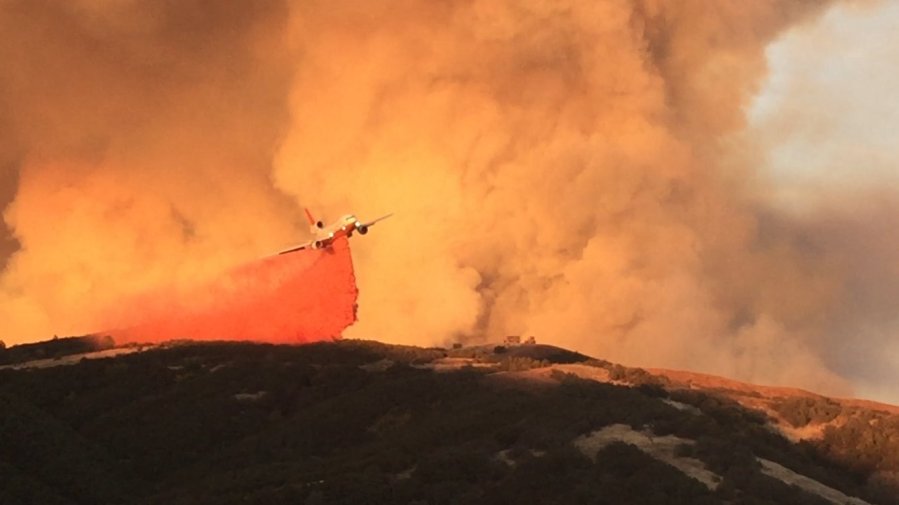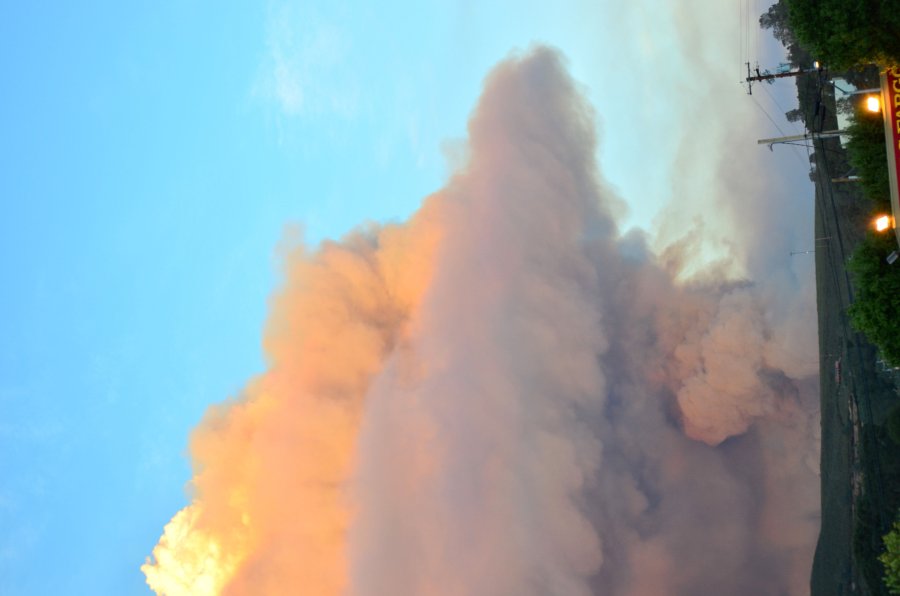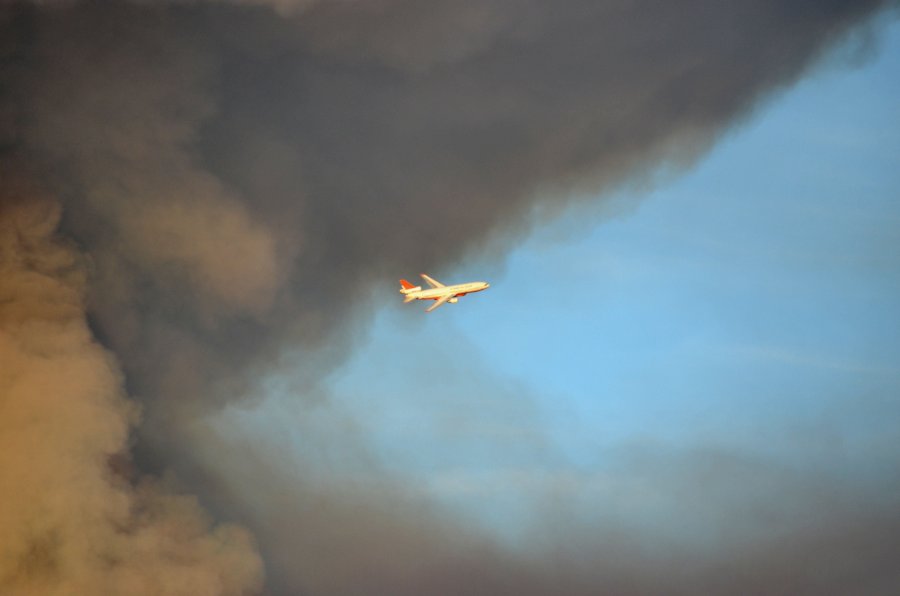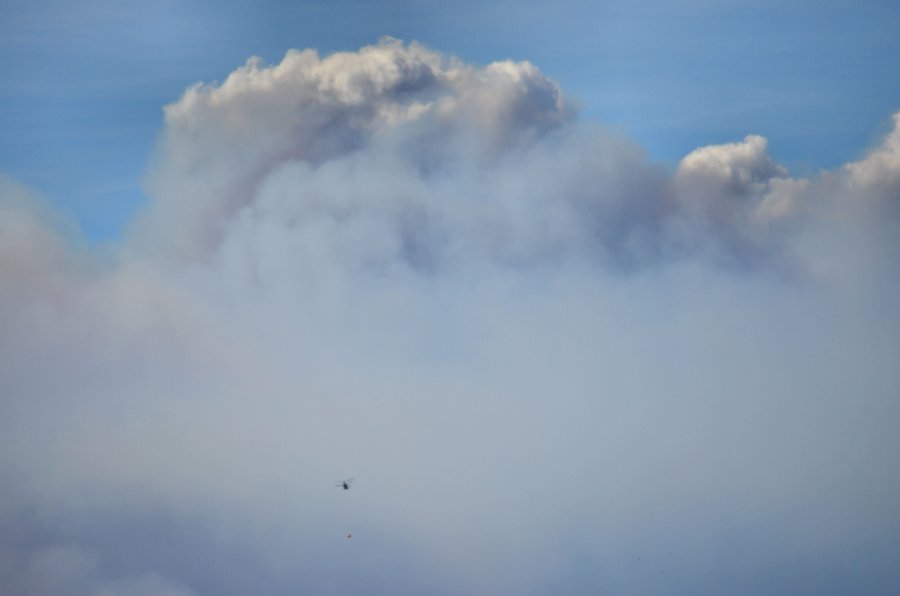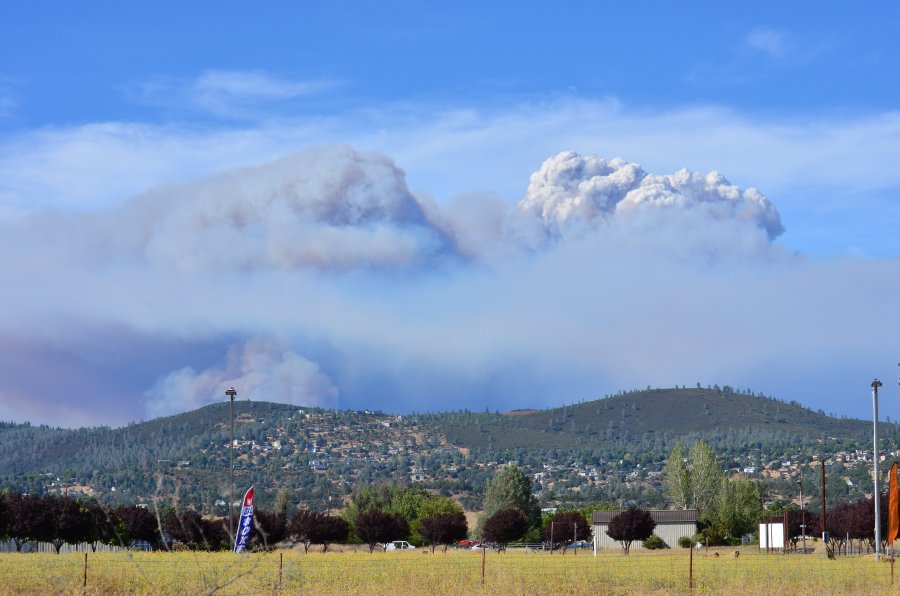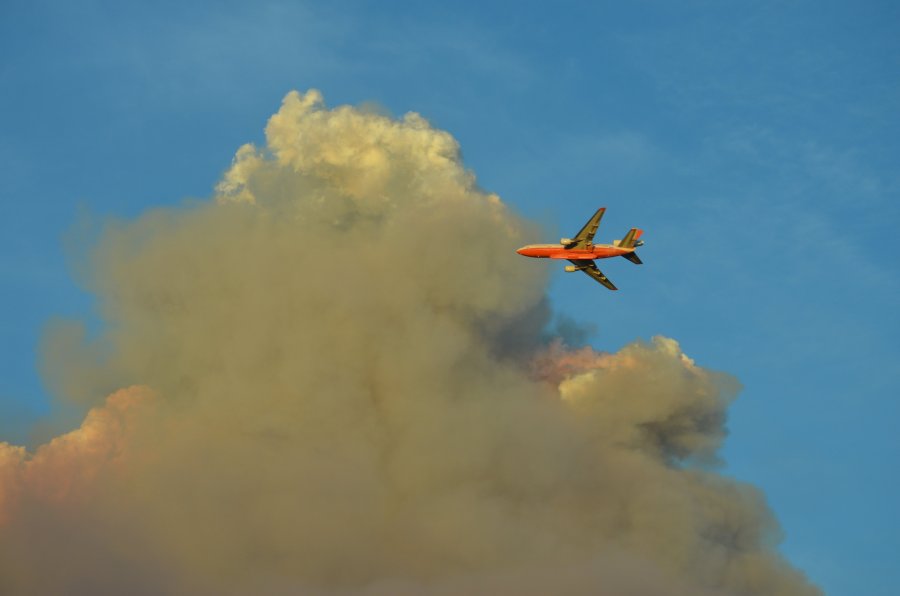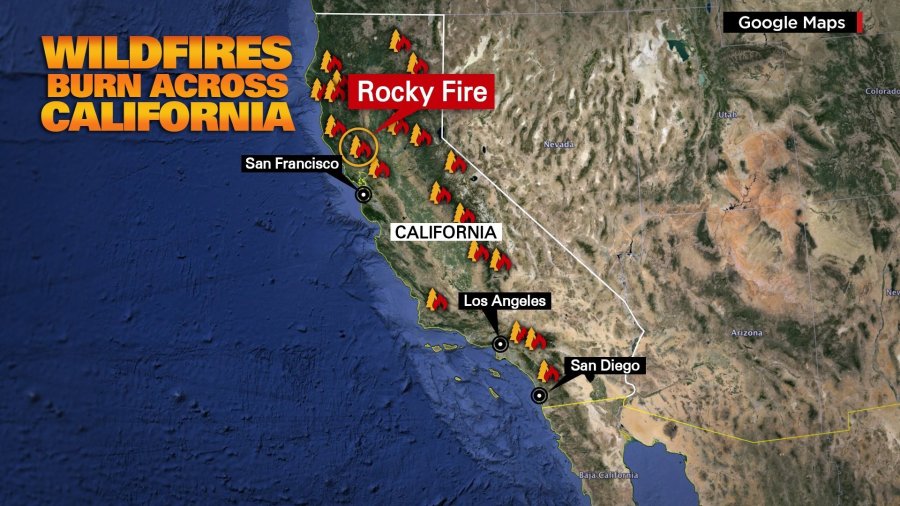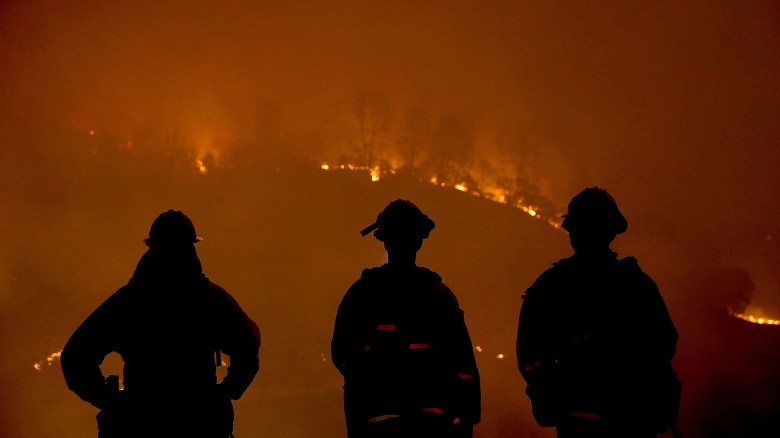CLEAR LAKE OAKS, Calif. — Wildfires like hot, dry weather. Firefighters prefer it cool and wet.
On Tuesday, the weather gods sided with firefighters, as they battled the 100-square-mile Rocky Fire in Northern California.
But on Wednesday, the weather was expected to turn dry again, siding once more with the wildfire, and fire officials were telling 13,000 evacuated residents to stay away from their homes, as they expect the battle against the flames to continue into next week.
That’s not easy for some.
Defying evacuation call
Joe Welz initially defied Sunday’s evacuation call, and instead stood up to Rocky’s fierceness, trying to protect his home. But on Monday he caved, packed up his dog and left.
“When you start seeing smoke plumes come up that are severe black, you know they’re in the brush, and they’re not too far away,” Welz said.
“And when you see flames — when you see flames, it’s really time to leave!”
“This is very scary, and it’s the first time something like this fire has happened,” said Welz, a 27-year resident of Spring Valley in Colusa County.
‘In God’s hands’
Others are taking the danger to their homes in stride.
“If I start getting worked up, I know I need to put it in God’s hands and the hands of the people fighting the fire,” said Madeline Lewek-Franco, another Spring Valley resident. “And if my home goes, it’s not the end of the world.”
Welz and Lewek-Franco found shelter at Moose Lodge 2284 in Clearlake Oaks, about 100 miles north of San Francisco, where tables overflowed with donated food to serve 200 evacuees who spent Monday night there or in their motor homes in the impromptu campground in the lodge’s parking lot.
A woman cried as she sat in a folding chair, looking at the smoke rising from hills on the horizon.
“My heart’s broken. Just broken,” the woman told CNN affiliate KOVR on Monday. “Lived here 13 years and I’ve loved it, but I don’t think I can go through this again.”
Weather as firefighter
A Pacific Ocean weather system dropped temperatures Tuesday, raised humidity and dumped rain in spots, forestry and firefighting agency Cal Fire said.
As of Wednesday morning, the Rocky Fire gobbled up 68,300 acres in a region 50 miles north of the Bay Area.
Firefighters contained only 20% of its vast size. It has taken 3,500 fire personnel, 327 fire engines, four air tankers and 19 helicopters to do so.
At one point in the past week, the fire exploded to consume 20,000 acres in just five hours. Almost 7,000 structures are being threatened by the fire, authorities said.
Future forecasts didn’t look promising.
“Hotter drier conditions are expected to return during the day increasing the potential for fire activity throughout the fire area,” Cal Fire said on its website.
Fickle storm clouds
In fact, the weather has sided mostly with the wildfires for the last four years in a historic drought that has blanketed California with parched, combustible brush.
And when it comes to the fires, storm clouds are a mixed blessing. They sometimes bring rain that helps calm the blazes, or they slam down lightning bolts that ignite new flames.
Recently, the clouds have delivered more curses than blessings.
Thousands of lightning strikes over the past several days have started small wildfires in the northern part of the state, Cal Fire said. Their effect has greatly outweighed the benefits of the rain.
24 wildfires
The Rocky Fire is the biggest battle for firefighters by far, but just one of 24 against wildfires spread across the state in a worse-than-average wildfire season. It is challenging the wit and grit of nearly 10,000 firefighters and has killed one of them.
Another firefighter got news that his home burned down while he battled a wildfire elsewhere, and six more people were injured in a fire.
But overall, the fires have spared people’s lives and health, and the flames are gradually losing the battle. Most of them are more than 60% contained.
The current two dozen blazes range from dozens to thousands of acres in size, and have consumed more than 134,000 acres, but the Rocky Fire alone is responsible for half of it, Cal Fire said.
And it has incinerated the most buildings — 39 residences and 52 sheds, barns or garages.
